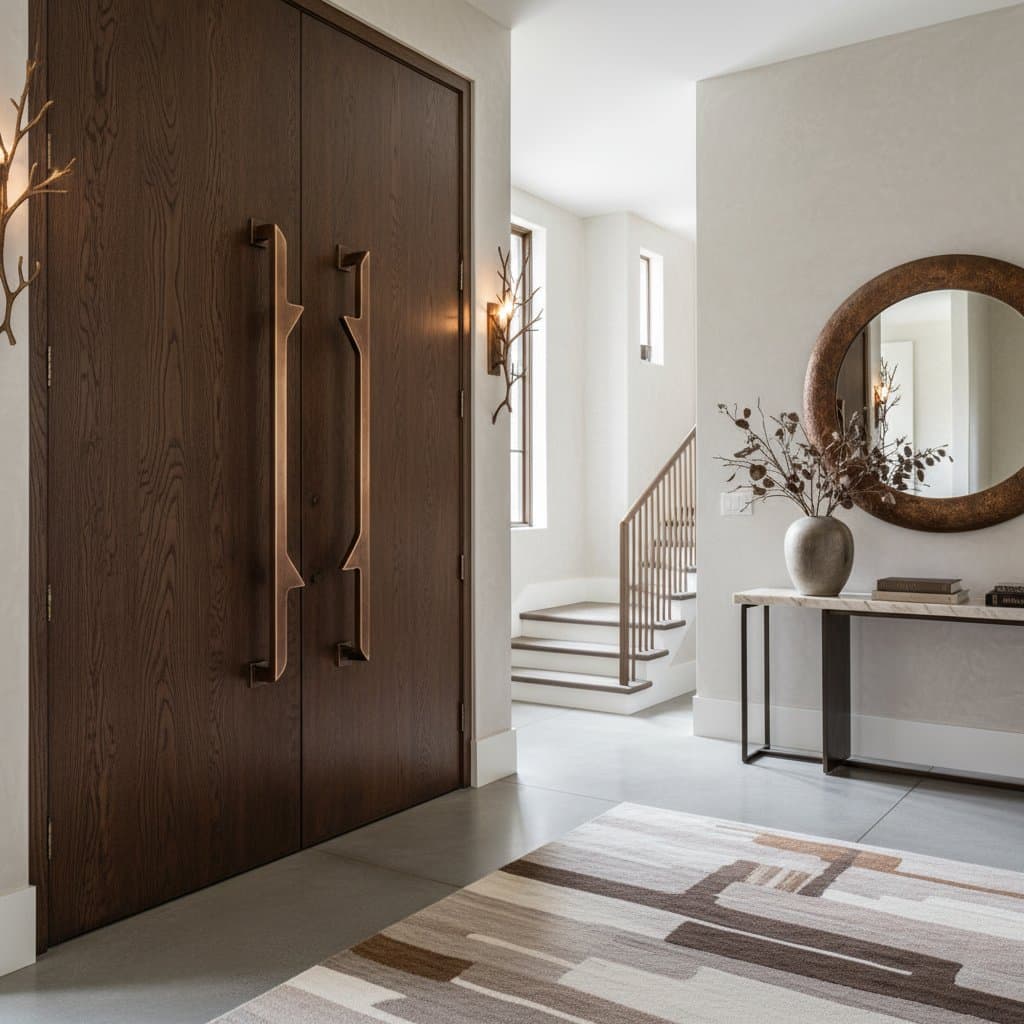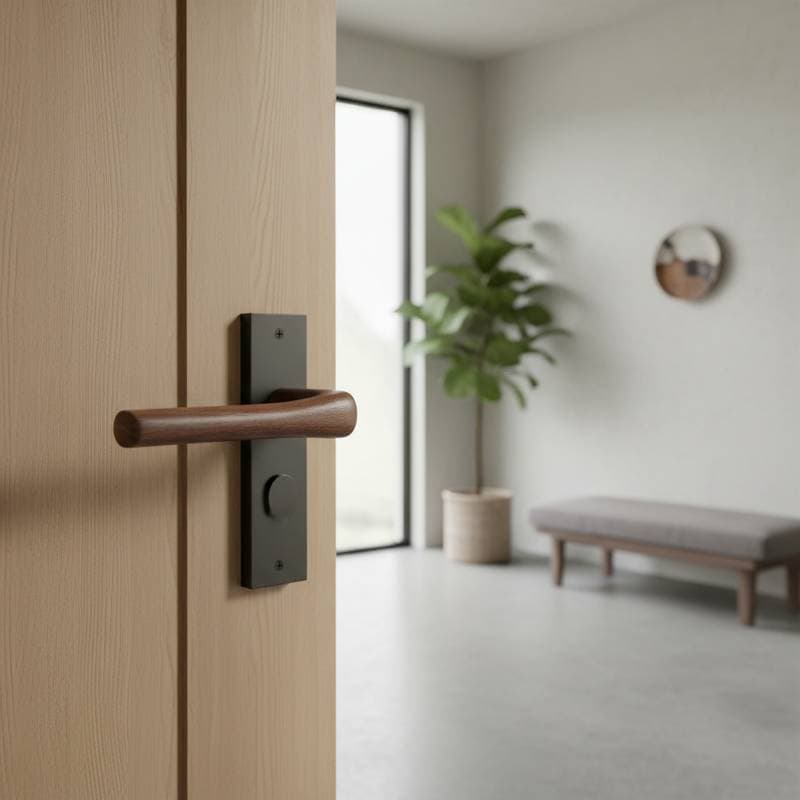Understanding Barn Door Challenges and the 2025 Quiet Glide Solution
Barn doors combine rustic aesthetics with practical space efficiency in interior design. Exposed tracks and rollers create visual interest, but performance issues frequently arise. Homeowners encounter clattering sounds, uneven movement, and gradual wear that diminish the initial appeal. The 2025 Quiet Glide systems resolve these problems by prioritizing mechanical precision alongside design integrity.
Common Issues with Traditional Barn Doors
Standard barn door installations rely on exposed steel tracks and basic rollers. These components transmit vibrations to surrounding structures, resulting in metallic clatter during operation. Rapid movements exacerbate the noise, while time leads to loosened fasteners, sagging tracks, and squeaking wheels. Additionally, incomplete seals allow sound leakage between rooms, restricting applications in private spaces like bedrooms or home offices. Despite persistent popularity, these shortcomings prompt many to seek reliable alternatives.
Advancements in Quiet Glide Technology
Quiet Glide systems tackle noise and alignment concerns with targeted engineering innovations. Precision ball bearings paired with soft polymer wheels enable effortless gliding on enclosed tracks. This design yields nearly silent motion and controlled speed. Integrated dampeners prevent slamming at endpoints, and anti-jump mechanisms secure the door against derailment. Such features prove especially valuable in open layouts, where ambient sounds amplify imperfections.
Practical Implementation Strategies
Homeowners can achieve the barn door aesthetic across varying budgets by selecting appropriate components.
Budget-Friendly Option ($500 - $1,500)
- Install powder-coated steel tracks equipped with nylon rollers for corrosion resistance and fluid motion at a modest price point.
- Select prefinished engineered wood panels that mimic reclaimed wood textures while lightening the load on hardware.
- Incorporate soft-close adapters to minimize impact noise and extend component longevity.
Mid-Tier Option ($1,500 - $3,000)
- Choose solid wood doors featuring integrated veneer for authentic texture and substantial presence.
- Opt for aluminum enclosed tracks with high-precision bearings to ensure quiet, consistent alignment over extended periods.
- Coordinate hardware finishes, including handles, pulls, and guides, for unified visual harmony.
Premium Option ($3,000 - $6,000)
- Commission custom hardwood doors with beveled edges or inlaid details to complement luxury settings.
- Employ architectural-grade stainless steel or anodized aluminum systems incorporating internal dampeners for exceptionally smooth and durable performance.
- Integrate concealed floor guides and track-embedded lighting for a seamless, elevated appearance in high-end interiors.
Selecting Materials and Finishes
Coordinating materials enhances the overall design coherence.
- Window Frames: Black or bronze frames with slim, matte profiles align with the hardware's linear elements.
- Door Surfaces: White oak or rift-cut walnut introduces warmth in modern spaces; soft taupe or charcoal paints offer crisp contrast against neutral walls.
- Interior Paneling: Shiplap or vertical tongue-and-groove extends the aesthetic subtly, finished in matte white or natural stains.
- Hardware Accents: Blackened steel pulls, brushed nickel handles, or antique brass latches provide coordinated variety with track elements.
Essential Maintenance Practices
Quiet Glide systems demand minimal intervention compared to legacy hardware. Regular dusting of tracks prevents particle buildup that could abrade wheels. Annual application of lubricant to bearings sustains optimal glide. Wood doors benefit from occasional furniture oil to preserve finishes in dry conditions. Replacement of soft-close cartridges remains straightforward and cost-effective if performance declines.
Key Installation Pitfalls to Avoid
Proper execution ensures long-term satisfaction.
- Secure tracks to structural elements like studs or blocking, not merely drywall, to counter sagging.
- Verify hardware capacity exceeds door weight to avert accelerated deterioration.
- Install bottom guides to maintain alignment and protect adjacent surfaces from contact.
- Confirm dimensional clearances around trim and fixtures before finalizing decorative elements.
Harmonizing Colors and Styles
Barn doors adapt to diverse aesthetics through finish choices and contextual integration. Match door tones to flooring and hardware for seamless flow.
- Modern Farmhouse: Soft white door paired with matte black track and brushed bronze pulls.
- Urban Industrial: Charcoal-stained oak with gunmetal hardware against exposed concrete.
- Coastal Contemporary: Light ash door, satin nickel track, and pale gray trim.
- Classic Warmth: Walnut veneer, antique brass hardware, and cream walls.
- Minimalist Neutral: Greige painted door, aluminum track, and black handle accents.
Pre-Installation Documentation Guide
Thorough preparation streamlines the selection process.
- Capture images of the doorway from multiple angles and perspectives.
- Measure ceiling height, baseboard dimensions, and proximities to outlets or vents.
- Document wall widths and required clearances in open and closed configurations.
- Assess home architecture to inform material and finish decisions.
- Review local regulations on hardware visibility or modifications.
- Evaluate environmental factors like humidity that influence material stability.
- Establish budget boundaries to prioritize core enhancements.
Benefits of Quiet Glide for Enduring Design
Beyond noise reduction, Quiet Glide systems promote hardware and door longevity through reduced friction. Stable mechanics support larger or paired door configurations safely. This integration of function and form elevates barn doors as permanent fixtures in contemporary homes.
Final Preparation Steps
To upgrade from problematic barn doors effectively:
- Verify structural support for load-bearing demands.
- Select hardware exceeding door specifications.
- Ensure finishes complement existing elements.
- Prioritize dampened or soft-close functionalities.
- Establish a schedule for cleaning and lubrication.
Achieving Lasting Barn Door Excellence
Quiet Glide innovations refine the barn door concept into a sophisticated, functional asset. Thoughtful material choices, precise installation, and routine care eliminate historical drawbacks. Homeowners gain a design feature that operates silently and reliably, enhancing daily living with effortless grace.






